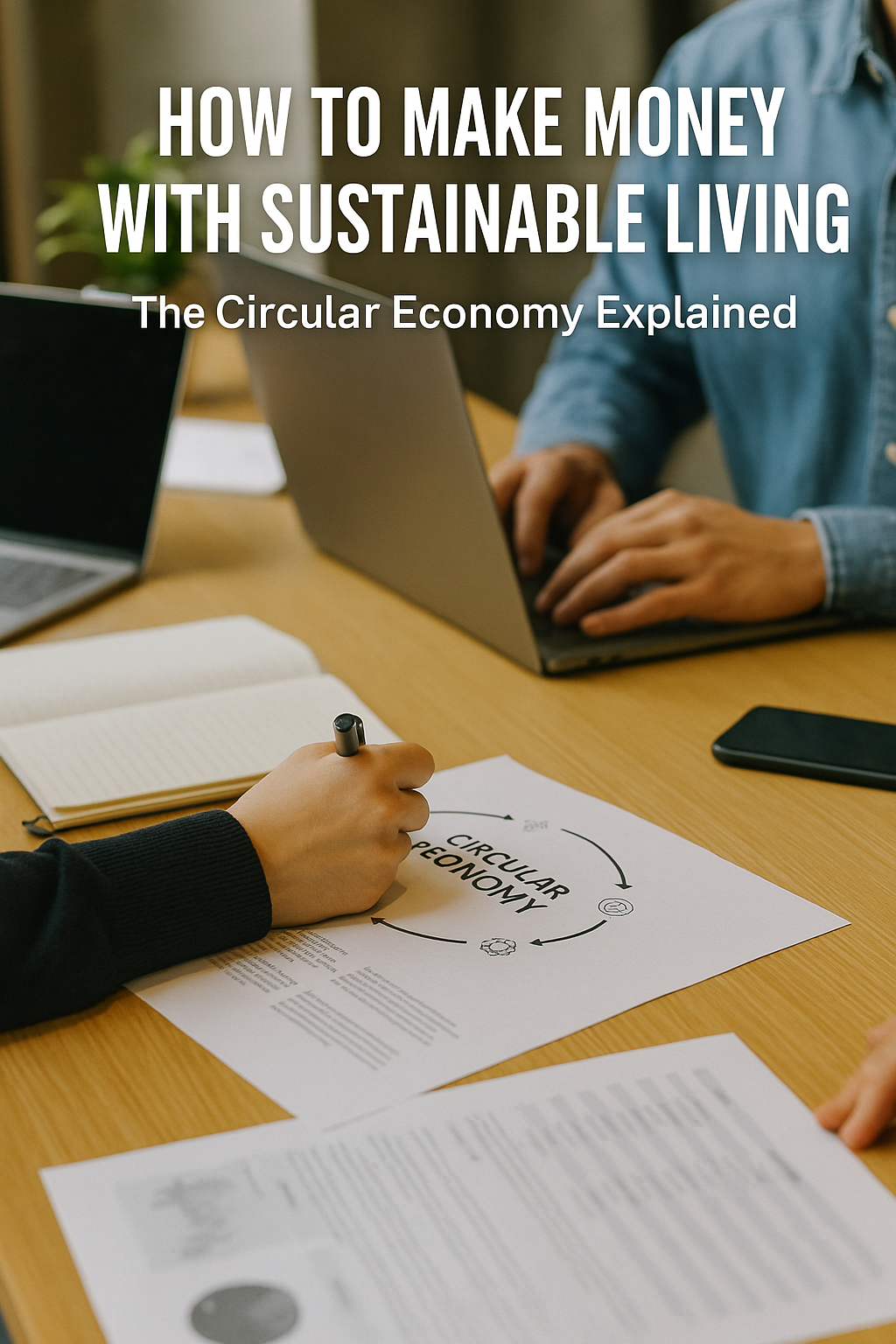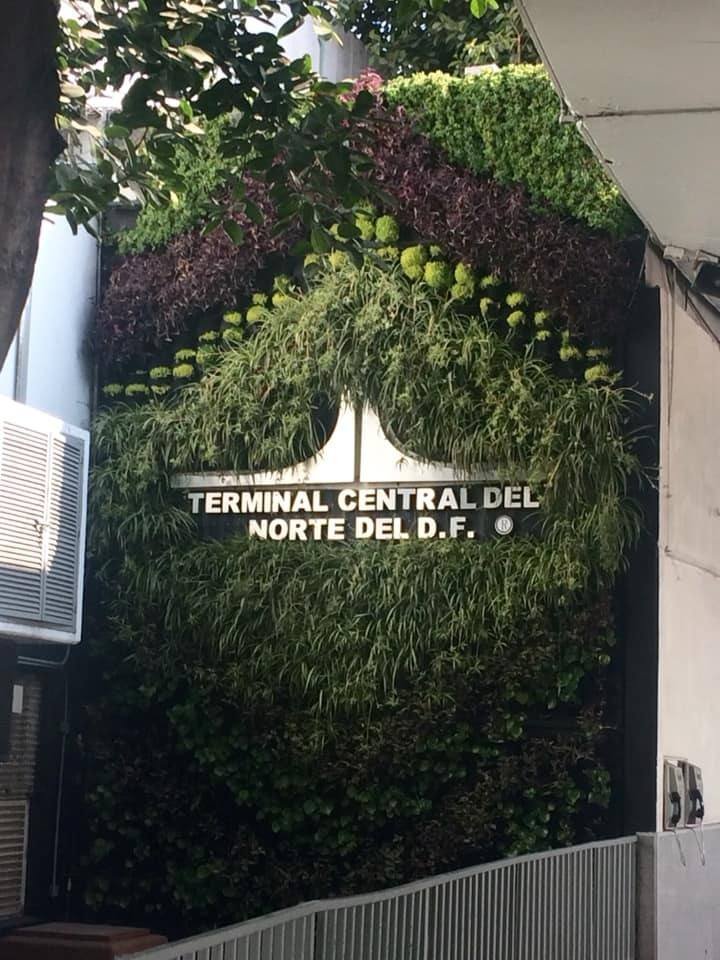¡Tu carrito está actualmente vacío!
How to Make Money with Sustainable Living: The Circular Economy Explained
Learn how sustainable living and the circular economy can generate real income. Discover eco-friendly business ideas, green investments, and everyday practices that save money and protect the planet.
Contents
- Why Sustainable Living Makes Money Now
- Core Principles of the Circular Economy
- Profitable Eco Actions: Quick Wins & Long-Term Gains
- Green Business Ideas You Can Start Today
- Systems That Scale: Green Architecture & Urban Nature
- Specification Guide: Choosing Materials & Inputs
- From Idea to Installation: A Simple Project Flow
- Maintenance, Performance & ROI Over Time
- Learn & Apply: Education, Mindset and Tools
- FAQ
- Start Today
1) Why Sustainable Living Makes Money Now
Sustainable living used to be framed as sacrifice. Today it’s a strategic path to financial resilience. The circular economy rewards households and businesses that design out waste, keep materials in use, and regenerate natural systems. With energy prices and input costs rising, every decision that reduces consumption, lengthens product life, or creates a secondary market becomes a direct source of savings or revenue.
Macro drivers of green profitability
- High energy and transport costs make efficiency a competitive advantage.
- Consumers prefer low-impact products with transparent sourcing.
- Regeneration (soil health, tree canopy, biodiversity) unlocks long-term asset value.
- Secondary markets (repair, refill, resale) multiply revenue per resource unit.
2) Core Principles of the Circular Economy
The circular economy replaces the linear take–make–waste model with a regenerative loop. Use this checklist to keep projects truly sustainable and profitable:
| Principle | What it means | Monetization lever |
|---|---|---|
| Design out waste | Plan for repair, modularity and end-of-life recovery. | Lower costs, sell spare parts, offer paid maintenance. |
| Keep materials in use | Refill, refurbish, remanufacture and resell. | Subscription refills, buy-back programs, trade-in credit. |
| Regenerate natural systems | Soil health, tree canopy, water cycles, biodiversity. | Premium yields, eco-certifications, carbon capture value. |
| Data-driven efficiency | Measure energy, water, inputs and outputs. | Reduce OPEX, prove impact to win clients and grants. |
Pro Tip: Map every input and output with a one-page Material Flow. Monetize outputs that look like “waste”.
3) Profitable Eco Actions: Quick Wins & Long-Term Gains
These sustainable actions have both immediate savings and strong lifetime ROI. Use them to build a durable, inflation-resistant household or business.
| Sustainable action | Quick win | Lifetime ROI lever |
|---|---|---|
| LED + smart controls | Cut lighting costs ~60–80% in days. | Lower maintenance; better UX → higher conversion in shops. |
| Rainwater & greywater reuse | Reduce irrigation bills instantly. | Drought resilience; green credit with clients and city programs. |
| Home microgreens rack | Weekly harvest for home/retail. | 400–600% margin per tray when systemized and pre-sold. |
| Organic soil boosters (chitin & calcium) | Healthier plants in 2–4 weeks. | Higher yields, premium pricing for chemical-free produce. |
| Tree planting (exotic or native) | Shade, aesthetic uplift. | Property value ↑; urban cooling; resale of propagated stock. |
| Repair–refurbish policy | Less waste, fewer returns. | Paid service plans; extended warranties as revenue. |
Quick Win: Create a 3-item Eco Stack: energy efficiency, water reuse, and soil health. Implement in that order for compounding savings.
4) Green Business Ideas You Can Start Today
4.1 Urban Farming & Microgreens
Microgreens fit the circular economy perfectly: low resource intensity, short cycles, high nutrition density and strong local demand. Start with a simple shelf, trays, a balanced organic substrate, and a chitin-rich amendment to boost natural defenses. Pre-sell weekly boxes to gyms, cafés and neighbors—recurring revenue from week one.
- Choose 3 staples: sunflower, pea shoots, radish (fast, flavorful, reliable).
- Standardize seeding densities and harvest rhythm (2× harvest windows per week).
- Offer a subscription box with recipes and storage tips.
4.2 Tree Nursery: Exotic & Urban-Hardy Species
Ginkgo biloba, Japanese maples and select sakuras have strong perceived value. Start small with containerized stock, track heights and vigor, and upsell delivery/planting. Propagate where legal and promote the urban nature benefits: shade, biodiversity, seasonal color and property value uplift.
4.3 Green Walls, Green Roofs & Biophilic Interiors
Biophilic systems convert empty surfaces into living assets. Revenue streams include design fees, installation, plant subscriptions, and service contracts. Use modular panels, irrigation with recirculation, and a maintenance calendar that anticipates pruning and nutrient pulses.
4.4 Repair, Refill & Resale (3R Commerce)
Launch a micro-service for repairs, refills or parts. The goal is to keep products in circulation while capturing margin that linear competitors leave on the table.
5) Systems That Scale: Green Architecture & Urban Nature
To scale sustainable income, think in systems: energy, water, materials and vegetation working together. Green architecture unites passive cooling, recycled materials, smart irrigation and living walls/roofs for measurable performance. These systems increase comfort, reduce emissions and raise long-term asset value.
System checklist for proposals
- Envelope: shading, reflectance, insulation, airtightness.
- Energy: LED, variable-speed drives, PV readiness, demand control.
- Water: rain capture, filtration, smart irrigation, reuse lines.
- Materials: low-VOC paints, recycled aggregates, FSC timber, bamboo.
- Vegetation: species plan (sun, wind, weight), substrate recipe, fertigation.
- Operations: sensors, dashboards, maintenance SLAs, impact reporting.
Pro Tip: Attach a one-page Impact & Savings Report to every quote. Decision-makers buy outcomes, not parts.
6) Specification Guide: Choosing Materials & Inputs
Low-impact construction & finishes
- Recycled aggregates and cement substitutes for structure.
- Engineered bamboo / FSC timber for joinery and façades.
- Low-VOC paints and adhesives to improve indoor air quality.
- High-recycled-content aluminum/steel for frames and brackets.
Living systems & substrates
- Lightweight mineral substrates for green roofs and walls.
- Organic inputs with chitin & calcium to strengthen roots and immunity.
- Slow-release compost blends to stabilize moisture and microbiota.
- Drip irrigation with recirculation; inline filtration to protect emitters.
Spec Note: In living walls, pair shade-tolerant species with modular inserts sized for quick swap-outs. Track EC and pH monthly; plan quarterly nutrient pulses.
7) From Idea to Installation: A Simple Project Flow
- Opportunity scan: List energy, water and material pain points. Identify 3 circular wins.
- Concept & budget: Select a system bundle (e.g., efficient lighting + water reuse + vegetation).
- Specs & sourcing: Lock inputs with low embodied carbon and proven durability.
- Pilot: Start in one zone; document baseline vs. post-install metrics.
- Rollout: Expand once ROI is confirmed; standardize maintenance.
- Report: Share savings and environmental impact to boost referrals.
8) Maintenance, Performance & ROI Over Time
The most profitable circular projects plan for care from day one. Create a maintenance calendar with energy checks, irrigation tuning, pruning windows and nutrient cycles. Protect the asset; protect the cash flow.
| Asset | Monthly task | Quarterly task | ROI signal |
|---|---|---|---|
| LED/controls | Runtime & sensor check | Occupancy recalibration | kWh ↓, comfort ↑ |
| Irrigation | Leaks & filter clean | Flow/pressure audit | Water use ↓, plant vigor ↑ |
| Living walls/roofs | Spot prune & pest scout | Nutrient pulse & replant weak cells | Coverage %, customer footfall ↑ |
| Urban trees | Moisture check & mulch | Structural prune | Shade hours ↑, heat gains ↓ |
Pro Tip: Include a performance dashboard screenshot in every quarterly review—visual proof sustains retainers.
9) Learn & Apply: Education, Mindset and Tools
Circular wealth compounds with skills. Build habits that align your choices with measurable outcomes: track energy, reuse streams, and plant health. Use simple journaling or spreadsheets to log savings and revenue—when you see the trendline, you keep going.
Mindset anchors for sustainable income
- Small loops, fast feedback: Prefer projects with 2–4 week results (microgreens, LED, irrigation tuning).
- Document & show: Before/after photos, kWh bills, water meters, harvest weights.
- Community effect: Share frameworks; referrals become your lowest-cost growth engine.
10) FAQ
Can I start an eco business with very little capital?
Yes. Begin with microgreens, repair/refill services, or small-batch compost/soil amendments. Validate with pre-orders and subscriptions to create predictable cash flow.
Are green investments actually profitable?
When you focus on efficiency, durability and regeneration, returns come from both savings and revenue—lower energy/water bills, longer product life, and premium pricing for low-impact goods.
What’s the fastest way to see results?
Start with an efficiency trio: LED + controls, irrigation tuning, and soil health upgrades. These deliver visible gains within weeks and fund deeper changes.
How do I price maintenance for living systems?
Bundle monthly checkups with quarterly nutrient pulses and replant allowances. Price by area or module count; include an uptime/coverage KPI in your SLA.
Start Today: 7-Step Checklist
- Make a one-page audit: energy, water, materials, vegetation.
- Pick 3 quick wins (LED, irrigation tune, soil health).
- Choose one revenue engine (microgreens, tree stock, repair/refill).
- Draft a 90-day plan with weekly actions and a tiny budget.
- Track metrics: kWh, m³, coverage %, harvest weight, revenue.
- Tell the story with photos and a monthly savings/revenue note.
- Scale what works; standardize your offer and maintenance.


Deja una respuesta